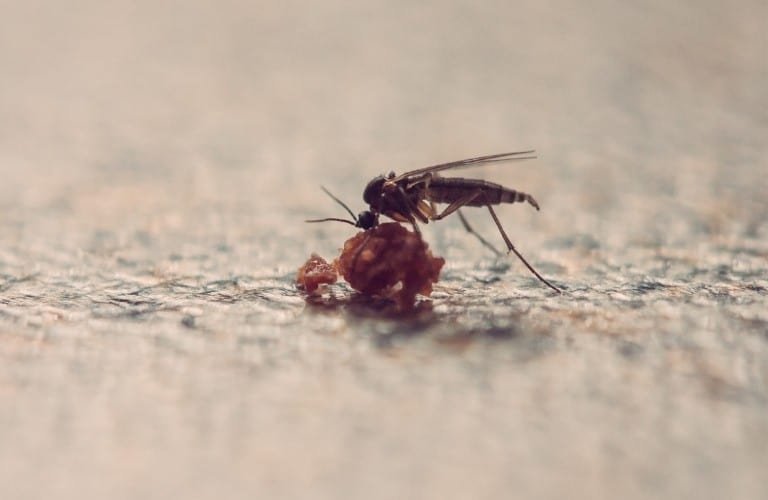Table Of Content

Black dots around these areas are a superb indication of gnats. In addition, gnats can come in on produce or flowers and plants you buy at the store. For example, an adult gnat may have laid eggs on the items before you brought them home, and now you are giving them an open invitation to hatch inside your house. Morgan says if you’ve exhausted all the home remedies and just can’t eradicate the gnats, it might be time to call in the pros.
Do I Have Gnats or Fruit Flies Inside?
I like the versatility of these Produce Saver Refrigerator Organizer Bins because of their size and their removable drain tray that keeps produce from sitting in any juices. You should also regularly clean the inside of your trash can, especially if there is any type of leakage from your trash bags into the can. While the problem may be inside of your house, you also want to check the perimeters to ensure there isn’t something on the exterior causing the problem.
Garsum Fruit Fly Sticky Trap Review - The Daily Beast
Garsum Fruit Fly Sticky Trap Review.
Posted: Mon, 05 Jun 2023 07:00:00 GMT [source]
What are the signs of a gnat infestation?
If you have interior house plants and think you have fungus gnats but aren't sure, yellow sticky traps can be placed in your plant pots near the base of the plant. This will help determine if you have any fungus gnat activity in the soil. Once the fruit rots, the larvae eat the fruit to grow into adult gnats. Gnats can also enter your home through an open door or window, emerge from eggs laid in produce, and grow eggs in potting soil. Once gnats are inside your home, they live in decaying matter and moist areas. You can always get rid of fungus gnats by cleaning the dead leaves from your pots.
How Do I Get Fruit Flies Out Of My Home?
On the same note, throw out your garbage, and until you do, make sure it stays in a sealed container. The same goes for any compost bins you might have — don’t leave them open throughout the day. No, you don’t need to kill your plants to keep gnats out of your home.

A professional can help better access the situation and dig deeper to see if you are missing the cause of the gnat infestation. You also want to check for rotten produce or plants and any garbage attracting gnats. Before you start treating for gnats, you want to identify where they came from. Gnats are tiny and can get through small gaps in windows and doors. Since they are attracted to light, you likely will find them in these areas of your home.
Don’t Overwater House Plants (They Love Moisture)
There are several home remedy methods of removing gnats you can try if you are still looking to rid your house of an infestation. Remember, gnats enter through windows and door cracks but once they’re inside, they’ll end up reproducing in damp and dark areas of your home. This is because those areas provide more safety than lit areas. However, once gnats are fully grown and not trying to reproduce, they’ll be attracted to lighten areas as well. Since it’s sometimes hard to distinguish which type of fly is moving around your house, it’s wise to use different tactics to help remove the flies from your home.

The most popular type of gnats are fungus gnats, which measure between 2-3 mm in length and are usually found around windows. The larvae of gnats mainly feed on fungi and decaying plant material but will eat through healthy plant roots. In addition, you may notice drain flies around your house, especially in the bathroom or kitchen. Drain flies are attracted to standing water and often lay their eggs there. Drain flies are also referred to as moth flies because of their fuzzy exterior.
How to Get Rid of Gnats for Good
The sugar is especially important, as it will lure in the bugs, leaving them trapped in the sticky solution. You might need to call in an expert to positively ID these pests. Gnats thrive on the fungus of your plants, so it helps to let your plant babies dry out between waterings. Once the soil dries out, you'll notice the death of not only the fungus, but the gnat larvae and eggs too. If the gnats keep appearing, experts at Colonial Pest Control Inc., recommend applying an indoor-friendly pesticide as a soil drench to soak and kill the gnats and fungus. Once indoors, gnats often infest trash cans, rotten fruit, and other moist places where decomposing organic matter exists.
More Ways to Prevent Gnats
Dirty kitchen sink drains can provide food, water, shelter and breeding sites to many fly species. You may have noticed that there are a lot of gnats around your indoor plants. This is often because plant soil is moist, which can be a breeding ground for gnats. Other species of gnats are attracted to overripe fruit and vegetables, according to Terminix's website. This explains why you often see fruit flies buzzing around the brown banana or mushy apple in your kitchen. Some gnats may even find their way into your trash can or garbage disposal in search of food and moisture.
You might wonder why gnats are in your home at all, but these small critters can access interiors easily. ‘Gnats may enter homes through open windows and doors, particularly in favorable outdoor conditions,’ explains Matt Kunz, president, Mr Rooter Plumbing, a Neighborly company. Along with vinegar, fruit flies like the smell of fruity beer and wine. Leave out an almost-empty open bottle of stale beer or old wine — the skinny neck will keep the flies trapped.
A gnat infestation is like a common cold in that you never realize how good you have it until you (or your plants) are unwell. Thankfully, unlike with a cold, there are a number of cures to a gnat infestation to get rid of those pesky critters for good! Particularly if the plants are overwatered, gnats thrive off of the soil's moisture, helping them live longer and reproduce frequently. ‘Fungus gnats are smaller than fruit flies and about one-sixteenth of an inch long and are a gray to black color.
Like phorid flies, drain flies love to stay around sewers, septic tanks, and drains. These gnats look like moths; they have larger wings than their bodies, giving them a furry appearance. If you tend to leave your fruits and vegetables out in the open frequently, be ready for an infestation.

No comments:
Post a Comment